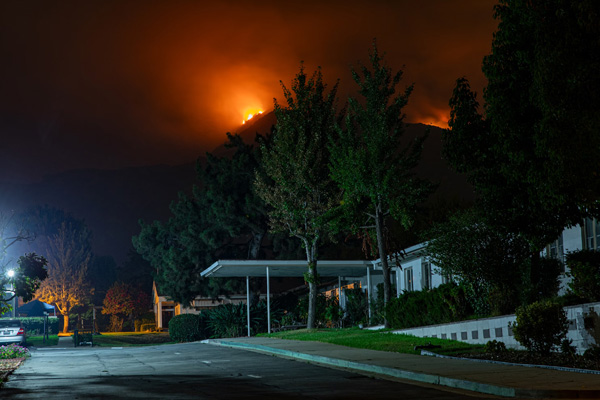California government fully contains deadly wildfire with crucial help from incarcerated firefighters

[Raging Wildfire in LA. Photo Courtesy of Nikolay Maslov. Photo Credit to Unsplash]
After an intense, three-week-long battle with one of the deadliest, most destructive fires in California’s history, the wildfires have been fully contained, thanks in large to the critical help from incarcerated firefighters, and California’s government agencies are now shifting focus to recovery efforts.
Following nearly a month of firefighting operations, Cal Fire, the state’s firefighting agency, announced that the fires have reached 100% containment on January 31st.
Alongside Cal Fire, other government agencies such as the California Governor’s Office of Emergency Services (Cal OES), Federal Emergency Management Agency (FEMA) and the County of Los Angeles along with other state and local partners have opened Disaster Recovery Centers (DRC) across Los Angeles County.
Fire containment signifies that the perimeter of the blaze is under control, preventing further spread,, and the containment line can be maintained.
For over three weeks, courageous firefighters battled intense windy conditions, fighting from the skies using air tankers too, on fire suppression missions.
Ground crews coordinated with the aircraft fleets as a unit for evacuations, rescues, and dousing the blaze.
To fully contain the fires, the role of incarcerated firefighters in protecting the people and property was pivotal.
Nearly 800 incarcerated firefighters were deployed; despite being deemed “essential” in combating the wildfire, as they cut “fire lines” and removed “fuel to slow fire spread”, their earnings are “meager”.
These incarcerated workers earn only a fraction of what non-incarcerated firefighter crews receive.
The imprisoned firefighters accounted for as much as “30% of the wildfire force” in the state of California, showing how much they are relied upon.
The fact that the incarcerated firefighters, who are doing such heroic, crucial work are not being paid a liveable wage for it, has sparked widespread controversy and criticism.
The wildfire outbreak is believed to be a result of the lack of rainfall, combined with the strong and dry Santa Ana winds, with winds in some areas reaching nearly 100 mph.
Although summer wildfires are common in California due to its unique climate, this particular outbreak stands out for two main reasons.
Firstly, the occurrence of a wildfire in January is highly unusual, as the wildfire season typically begins in June, when it is hot and dry.
The fires began on January 7th in northern Los Angeles County, with the Palisades Fire being the first to erupt.
Secondly, this fire was unusually severe, going down as one of the most intense and destructive fires - according to JPMorgan, the total economic losses caused by the fire could reach “$50 billion”.
The series of relentless wildfires covered a large area, with the Palisades Fire, the largest of the blazes, growing to “23,448 acres”, according to the California Department of Forestry and Fire Protection, Cal Fire, and it “destroyed more than 6,800 structures and killed at least 12 people”.
The Eaton Fire, which broke out just hours after the Palisades, in downtown Los Angeles, also affected “14,021 acres”, with “10,491 structures” damaged or destroyed in the blaze.
The Eaton Fire now ranks as the second most destructive fire in California’s history.
Much of this devastation can be explained by climate change, as the rising global temperatures translate to California experiencing “record-breaking temperatures and extreme heat”.
These hotter, drier conditions make fires easier to spread, and create an ideal fuel source for the wildfires.
There has been a growing public outcry demanding for the firefighters on the frontline to be paid fairly, as the LA fires highlighted the key role the incarcerated workers play.
In fact, a new bill that would ensure that incarcerated firefighters be paid an hourly wage equal to the lowest non-incarcerated firefighter wage was recently introduced.
The two wildfires claimed 29 lives and displaced thousands of people, leaving many who were forced to evacuate without a home, as it was burned down.
As authorities launch recovery plans, in California, there has been a movement to raise money for restoration and wildfire risk reduction.
These catastrophic wildfires in California are a stark, urgent reminder that we must collectively take action to protect communities from the violent effects of climate change.

- Jaewon Lee / Grade 9
- Crean Lutheran High School

![THE HERALD STUDENT REPORTERS [US]](/assets/images/logo_student_us.png)
![THE HERALD STUDENT REPORTERS [Canada]](/assets/images/logo_student_ca.png)
